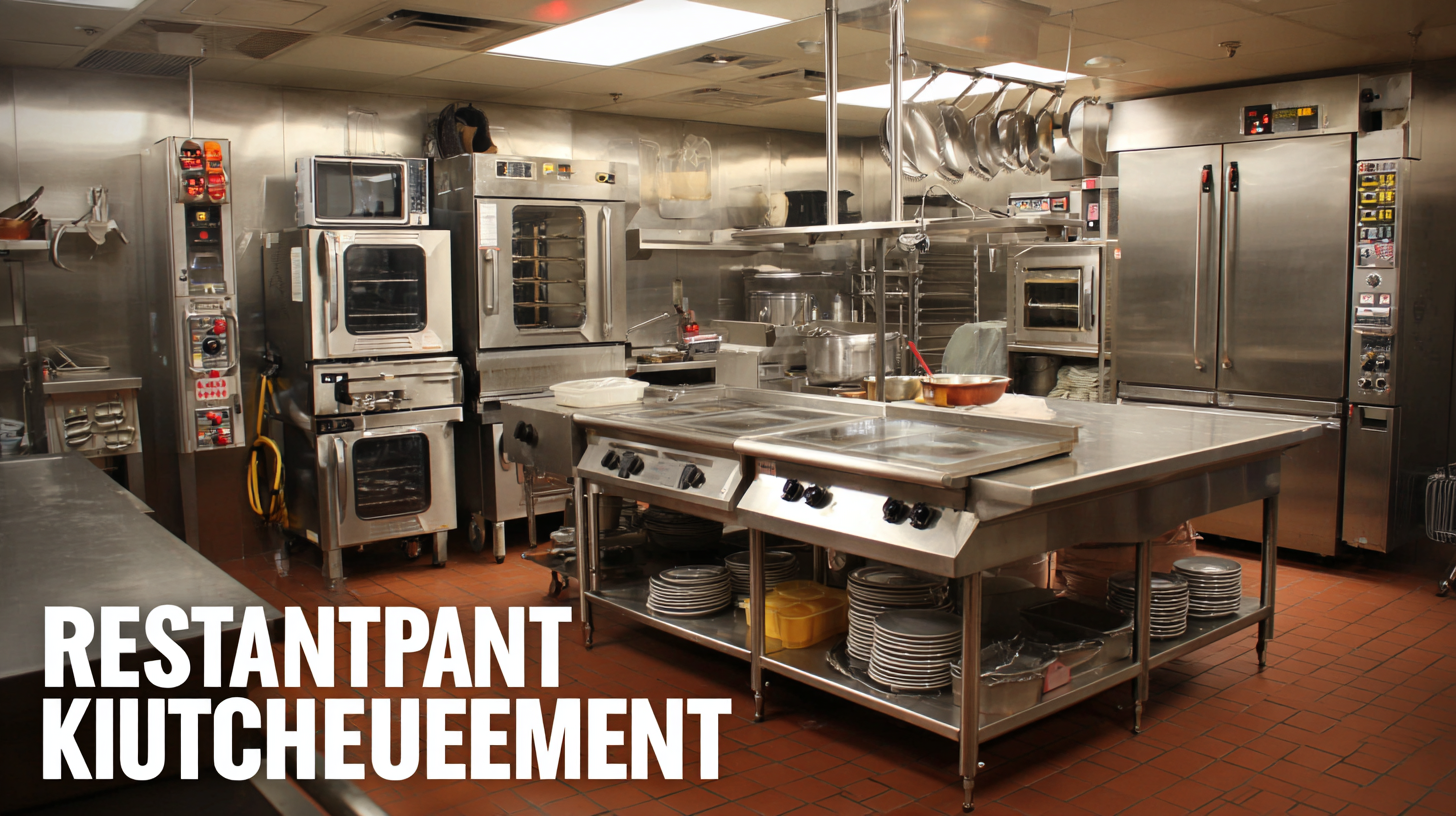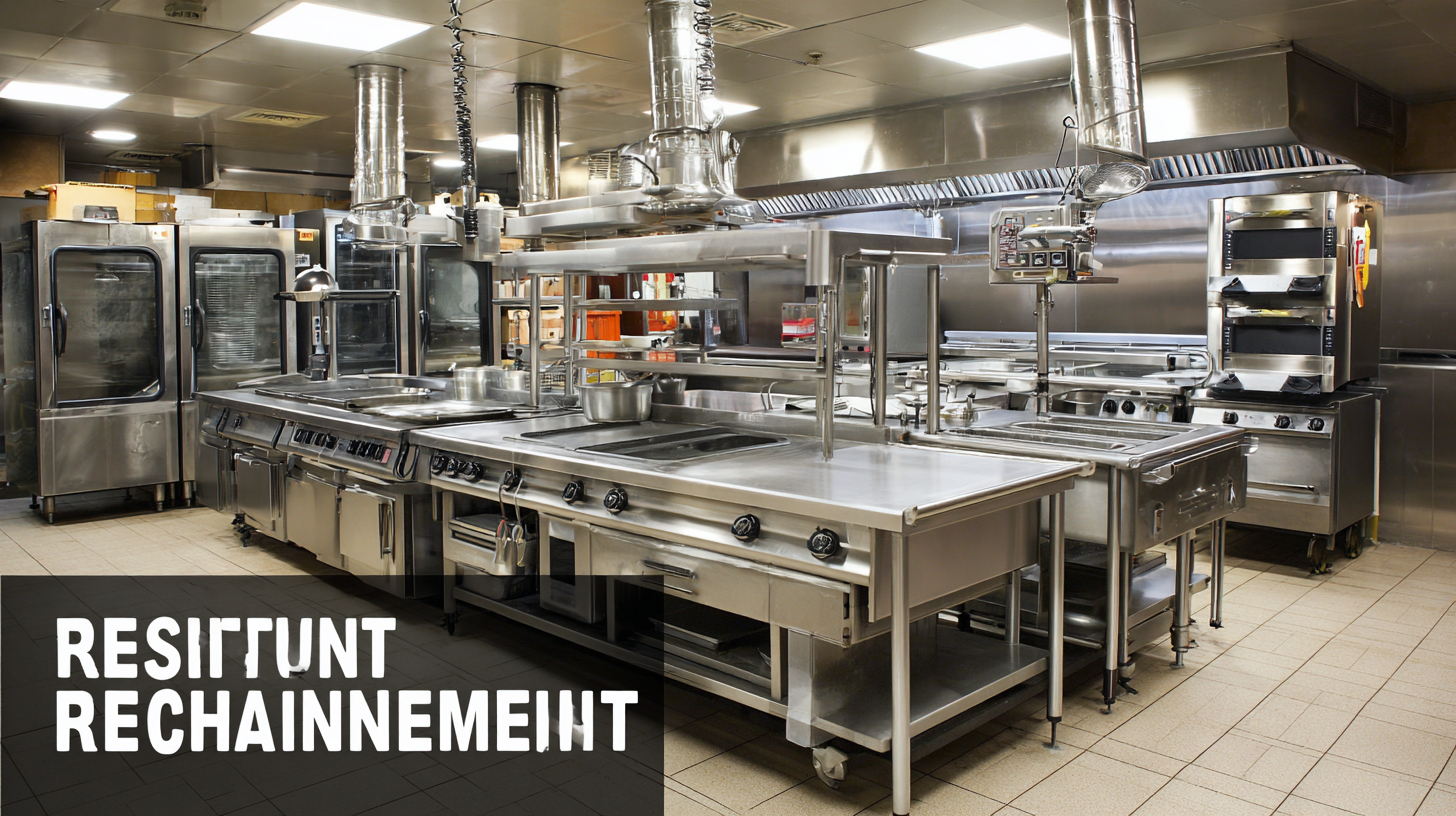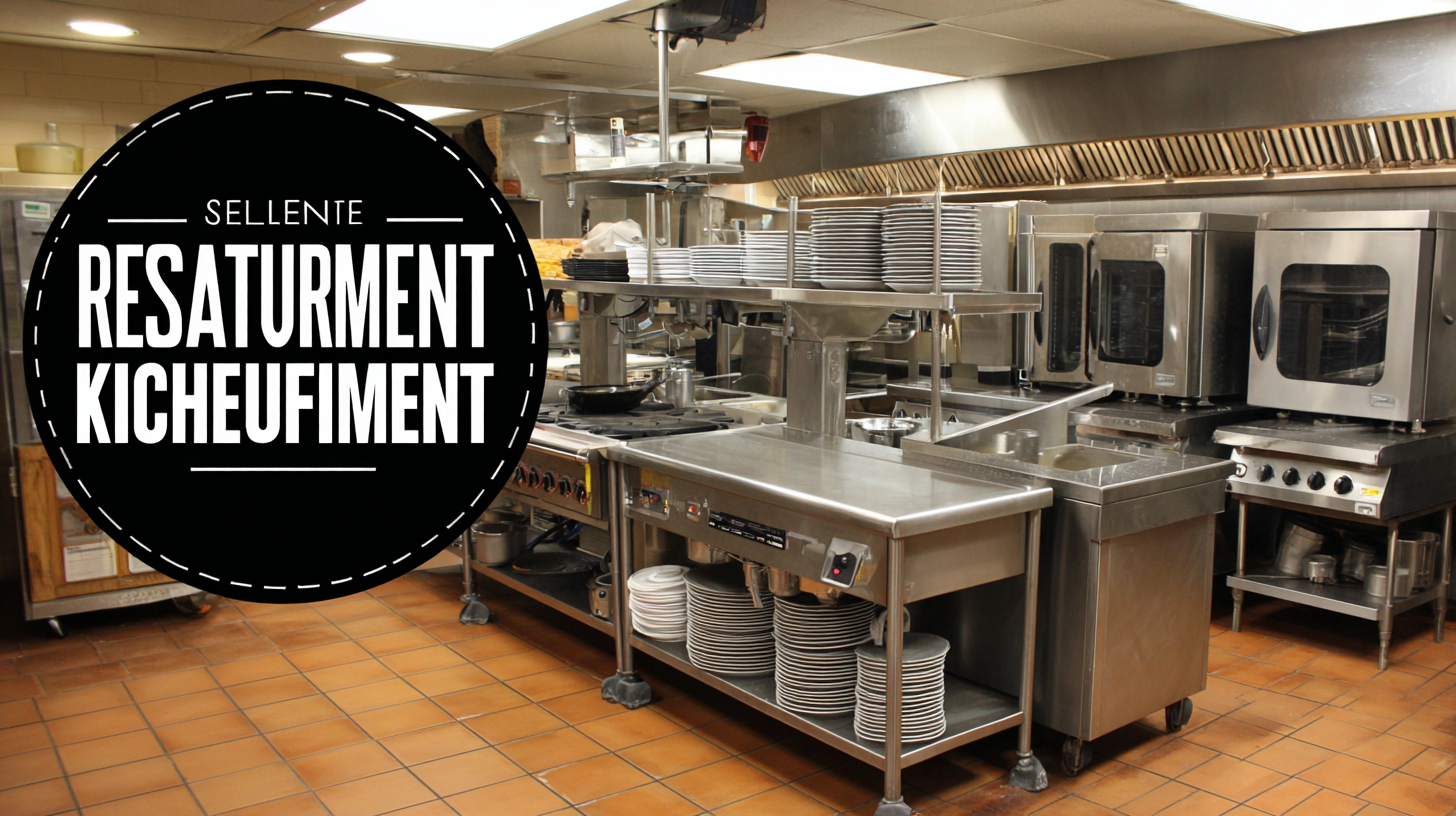How to Select the Best Restaurant Kitchen Equipment for Optimal Efficiency and Profitability
In the competitive landscape of the restaurant industry, selecting the right restaurant kitchen equipment is pivotal for ensuring both operational efficiency and profitability. According to the National Restaurant Association, nearly 50% of restaurant owners cite equipment costs as a significant expense impacting their bottom line. Furthermore, a recent report by Technavio found that the global commercial kitchen equipment market is projected to grow by $9.5 billion from 2020 to 2024, highlighting the increasing investment in quality equipment to achieve streamlined kitchen operations. Understanding the balance between initial investment, after-sales service advantages, and maintenance costs is essential for restaurateurs aiming to minimize downtime and maximize productivity. By carefully evaluating equipment options that offer not only high performance but also robust support services, restaurants can enhance their efficiency, reduce repair costs, and ultimately drive higher profitability.

Identifying Essential Kitchen Equipment for Restaurant Success
When it comes to ensuring the success of your restaurant, selecting the right kitchen equipment is paramount. Essential kitchen equipment not only boosts efficiency but also enhances the quality of service and food preparation. Start by investing in high-quality appliances like ranges, ovens, and refrigerators that meet your specific cooking needs. Prioritizing durable equipment can save you money in the long run by minimizing repairs and replacements.
Tips: Assess the layout of your kitchen to optimize workflow and select equipment that fits seamlessly into your design. Look for multipurpose machines, such as combi ovens, which can steam, bake, and roast, allowing for versatile cooking methods without the need for multiple devices. Additionally, consider energy-efficient options; they reduce utility costs and are environmentally friendly, making your business more sustainable.
Another critical aspect is ensuring your kitchen is equipped with the right utensils and smallwares. Stock up on essential tools like chefs’ knives, cutting boards, and food processors, which facilitate a smooth cooking process. Also, organize storage solutions to keep ingredients fresh and accessible. With the right equipment and organization, your kitchen will operate at its best, setting the foundation for restaurant success.
How to Select the Best Restaurant Kitchen Equipment for Optimal Efficiency and Profitability
| Equipment Type | Importance Level | Estimated Cost ($) | Efficiency Impact | Recommended Units |
|---|---|---|---|---|
| Commercial Range | High | $3,000 - $10,000 | High | 1 - 2 |
| Refrigerators | High | $1,200 - $5,000 | Medium | 1 - 3 |
| Dishwasher | Medium | $2,000 - $7,000 | High | 1 |
| Food Processor | Medium | $300 - $2,000 | Medium | 1 - 2 |
| Fryer | High | $2,000 - $5,000 | High | 1 |
Evaluating Quality vs. Cost in Restaurant Equipment Procurement
When it comes to restaurant equipment procurement, evaluating quality versus cost is crucial for achieving optimal efficiency and profitability. Selecting the right kitchen tools can significantly impact your operations, so it's essential to strike a balance between investing in high-quality equipment and staying within budget. High-quality equipment may come with a higher price tag, but it often offers greater durability and performance, leading to long-term savings.
**Tip 1:** Conduct thorough research on different brands and models before making a purchase. Reading reviews and asking for recommendations can help you identify equipment that is both cost-effective and reliable.
Another aspect to consider is the total cost of ownership, which includes maintenance and energy consumption over time. Sometimes, a cheaper upfront cost can lead to higher operational costs down the line.
**Tip 2:** Look for energy-efficient models that not only reduce utility bills but also contribute to a greener operation. This can be a selling point to environmentally-conscious customers.
Ultimately, finding the right blend of quality and cost will set the foundation for a successful kitchen that operates efficiently while maximizing profit margins.

The Role of Technology in Enhancing Kitchen Efficiency
In today's competitive restaurant industry, technology plays a crucial role in enhancing kitchen efficiency. Smart kitchen equipment, such as programmable ovens and energy-efficient stoves, not only streamline cooking processes but also minimize wastage. By investing in high-tech appliances, restaurant owners can ensure consistent food quality while speeding up service times, which directly impacts customer satisfaction and repeat business.
Moreover, embracing kitchen management software can significantly improve operational workflows. These systems facilitate better inventory management, allowing chefs to track ingredient usage in real-time and reorder supplies before they run out. Additionally, data-driven insights from these tools can help identify peak hours and popular dishes, enabling restaurants to optimize staffing and menu offerings.
In a fast-paced environment where margins are tight, leveraging technological advancements is essential for maximizing profitability and creating a seamless dining experience.
How to Choose Durable Equipment for Long-Term Profitability
 When selecting restaurant kitchen equipment, durability is paramount for ensuring long-term profitability. According to a report by the National Restaurant Association, nearly 30% of restaurant failures are attributed to the high cost of equipment that is not built to last. Investing in high-quality, durable equipment not only reduces maintenance costs but also minimizes the downtime that can lead to lost revenue. Stainless steel appliances, for example, are known for their longevity and resistance to rust and corrosion, making them a wise choice for any commercial kitchen.
When selecting restaurant kitchen equipment, durability is paramount for ensuring long-term profitability. According to a report by the National Restaurant Association, nearly 30% of restaurant failures are attributed to the high cost of equipment that is not built to last. Investing in high-quality, durable equipment not only reduces maintenance costs but also minimizes the downtime that can lead to lost revenue. Stainless steel appliances, for example, are known for their longevity and resistance to rust and corrosion, making them a wise choice for any commercial kitchen.
Tip: When evaluating equipment, look for those with long warranties and positive reviews from industry professionals. This often indicates the manufacturer’s confidence in their product’s durability. Additionally, consider the total cost of ownership, which includes not just the initial purchase price but also energy efficiency and maintenance costs.
Another critical aspect is adhering to industry standards, such as NSF International certifications, which ensure that the equipment meets health and safety requirements. A well-chosen kitchen setup not only endures the rigors of daily operations but also upholds the restaurant's reputation for quality.
Tip: Prioritize energy-efficient equipment, as it can lead to significant savings; restaurants can save up to 30% on energy costs with the right appliances. By focusing on durability and efficiency, operators ensure their kitchen is a profit-generating powerhouse rather than a constant source of expense.
Sourcing from Reliable Manufacturers for Optimal Equipment Value
Selecting the right kitchen equipment is crucial for restaurant owners aiming to enhance efficiency and profitability. One of the most significant steps in this process is sourcing from reliable manufacturers. According to a report from the Food Service Equipment Manufacturers Association (FESMA), investing in high-quality kitchen equipment can increase energy efficiency by up to 30%, which not only lowers utility bills but also contributes to a more sustainable operation.
When evaluating manufacturers, it's essential to look for those who offer strong warranties and are known for outstanding customer service. A survey by the National Restaurant Association revealed that 60% of restaurant operators consider dependable equipment a key factor in maintaining optimal kitchen performance. Sourcing from these reliable manufacturers can provide peace of mind, ensuring that equipment can withstand the demands of a busy kitchen environment, reduce downtime, and facilitate smoother operations.
Furthermore, choosing equipment from recognized brands can enhance a restaurant’s reputation. A study by Mintel found that 75% of consumers are willing to pay more for meals prepared with high-quality kitchen appliances. This consumer preference highlights the long-term value of sourcing quality equipment, translating into a competitive edge in a crowded market.
